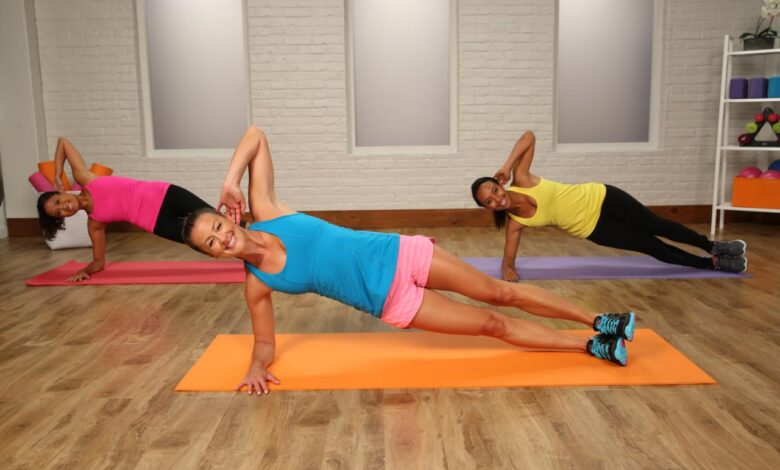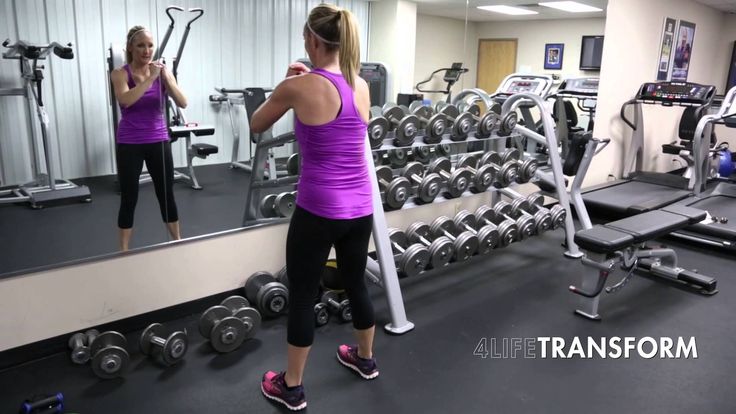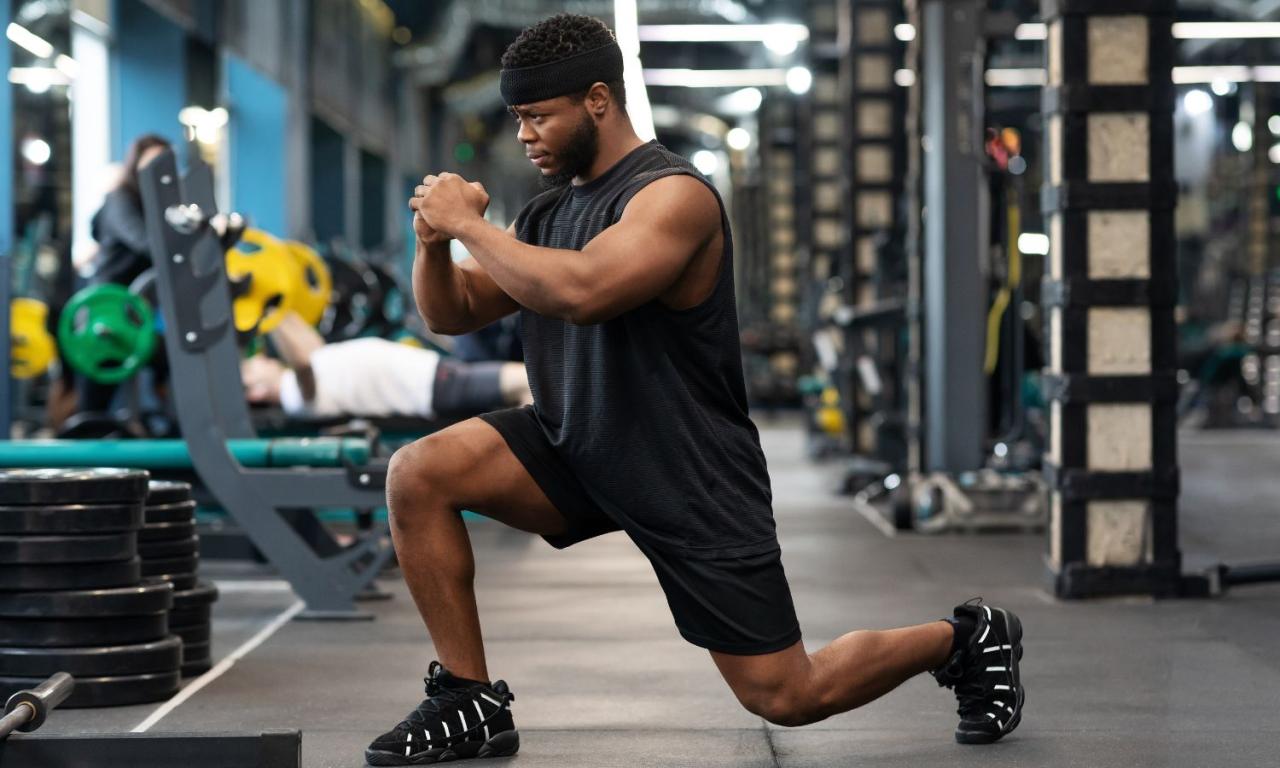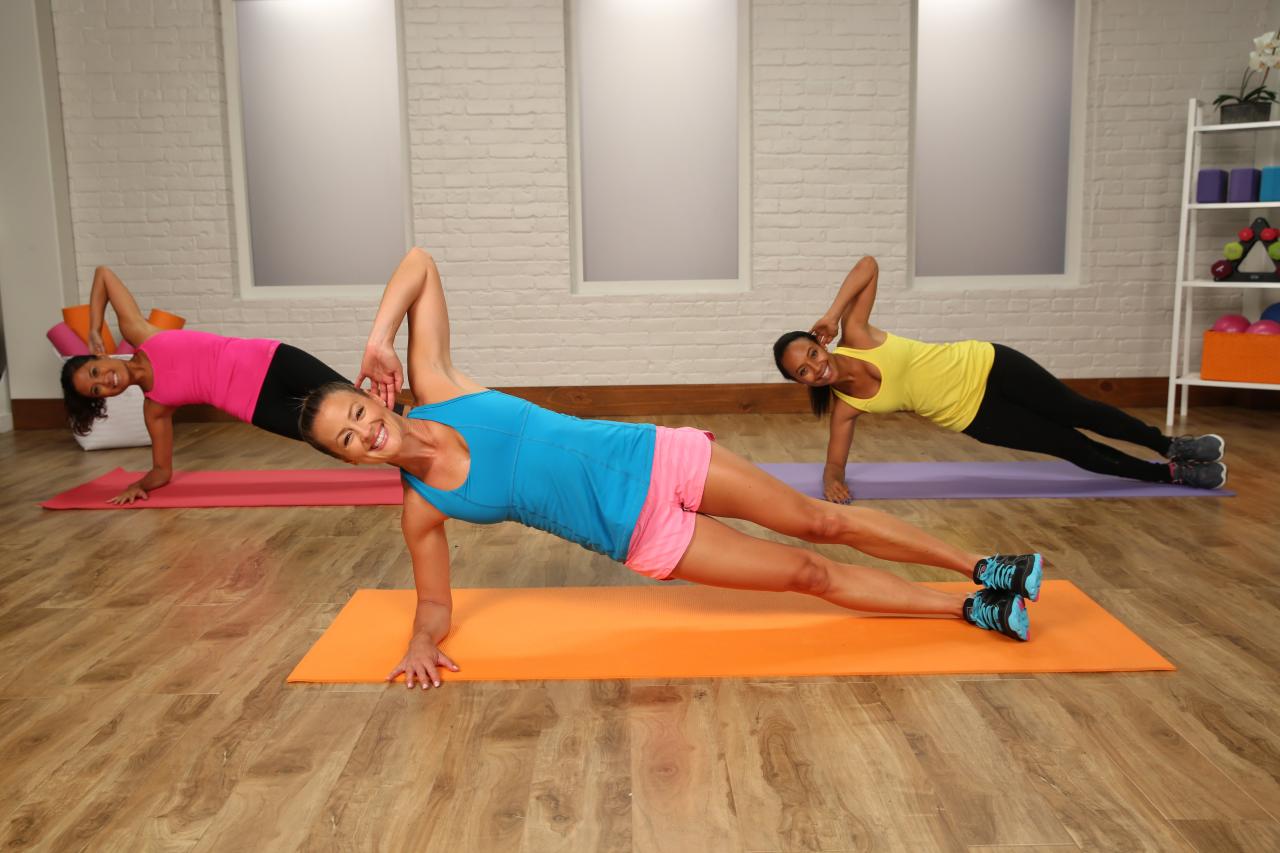
28 Day Squat Plank Lunge Plan: Transform Your Body in a Month
The 28 Day Squat Plank Lunge Plan sets the stage for a transformative journey, guiding you through a month of focused exercises designed to sculpt your physique and elevate your fitness levels. This comprehensive program, rooted in the power of squats, planks, and lunges, offers a structured approach to achieving your fitness goals.
You’ll find a detailed breakdown of each exercise, incorporating variations to challenge your muscles and enhance your strength.
Prepare to embark on a journey of gradual progression, where each day builds upon the previous one, pushing you to reach new heights of strength and endurance. This plan isn’t just about the exercises; it emphasizes proper form, nutrition, and recovery, ensuring that you achieve results safely and effectively.
Introduction to the 28-Day Squat Plank Lunge Plan

This 28-day program is designed to help you build strength, improve your core stability, and enhance your overall fitness. Whether you’re a beginner or an experienced exerciser, this plan offers a structured approach to incorporating squats, planks, and lunges into your routine.
Benefits of the Plan
This plan offers a range of benefits, including:
- Increased lower body strength and endurance: Squats, planks, and lunges target major muscle groups in your legs, glutes, and core, leading to increased strength and endurance.
- Improved core stability: Planks are a fundamental exercise for strengthening your core muscles, which play a crucial role in maintaining proper posture, balance, and stability.
- Enhanced flexibility and range of motion: Lunges promote flexibility and improve your range of motion in your hips, knees, and ankles.
- Increased calorie burn: These exercises are effective for burning calories, contributing to weight management and overall fitness.
- Improved cardiovascular health: Regular exercise, including the exercises in this plan, can help improve your heart health and cardiovascular function.
Rationale for Squat, Plank, and Lunge Exercises
Squats, planks, and lunges are fundamental exercises for building a well-rounded fitness foundation.
- Squats: Squats work multiple muscle groups simultaneously, targeting your quads, hamstrings, glutes, and calves. They also improve your balance and coordination.
- Planks: Planks are a static exercise that engages your core muscles, including your abs, obliques, and lower back. They are crucial for improving core strength, stability, and posture.
- Lunges: Lunges target your quads, hamstrings, glutes, and calves. They also improve your balance, coordination, and flexibility.
Importance of Consistency and Proper Form
Consistency is key to achieving results with any exercise program. It’s important to stick to the plan and perform the exercises regularly. Proper form is also crucial for maximizing benefits and preventing injuries.
“Focus on maintaining proper form throughout the program. If you’re unsure about your form, consult a qualified fitness professional.”
Detailed Breakdown of the Plan: 28 Day Squat Plank Lunge Plan

This 28-day squat plank lunge plan is designed to help you build strength, improve flexibility, and enhance your overall fitness. It follows a progressive approach, gradually increasing the intensity and duration of the exercises over the four weeks. The plan is structured to accommodate different fitness levels, with modifications provided to suit your needs.
Daily Workout Schedule
The daily workout schedule Artikels the exercises, sets, reps, and rest periods for each day of the week. You will perform three exercises: squats, planks, and lunges.
- Day 1:Squats (3 sets of 10 reps), Plank (3 sets of 30 seconds), Lunges (3 sets of 10 reps per leg)
- Day 2:Rest
- Day 3:Squats (3 sets of 12 reps), Plank (3 sets of 45 seconds), Lunges (3 sets of 12 reps per leg)
- Day 4:Rest
- Day 5:Squats (3 sets of 15 reps), Plank (3 sets of 60 seconds), Lunges (3 sets of 15 reps per leg)
- Day 6:Rest
- Day 7:Squats (3 sets of 10 reps), Plank (3 sets of 30 seconds), Lunges (3 sets of 10 reps per leg)
Repeat this weekly schedule for four weeks.
Progression of the Plan
The plan progresses by increasing the number of repetitions and the duration of the plank hold each week.
- Week 1:Squats (3 sets of 10 reps), Plank (3 sets of 30 seconds), Lunges (3 sets of 10 reps per leg)
- Week 2:Squats (3 sets of 12 reps), Plank (3 sets of 45 seconds), Lunges (3 sets of 12 reps per leg)
- Week 3:Squats (3 sets of 15 reps), Plank (3 sets of 60 seconds), Lunges (3 sets of 15 reps per leg)
- Week 4:Squats (3 sets of 18 reps), Plank (3 sets of 75 seconds), Lunges (3 sets of 18 reps per leg)
Exercise Modifications
It is important to modify the exercises based on your fitness level and limitations.
Squats
- Beginner:Perform chair squats, using a chair for support. Sit on the chair and stand up, maintaining a straight back and engaging your core muscles. This variation reduces the range of motion, making it easier for beginners.
- Intermediate:Perform bodyweight squats, keeping your back straight and core engaged. Ensure your knees do not go past your toes.
- Advanced:Add weights to your squats by holding dumbbells or using a barbell. This increases the resistance and challenges your muscles.
Plank
- Beginner:Start with a modified plank, resting on your forearms instead of your hands. Keep your body in a straight line from head to heels, engaging your core and glutes. This variation reduces the pressure on your wrists.
- Intermediate:Perform a standard plank, holding your body in a straight line from head to heels, resting on your forearms and toes. Engage your core and glutes to maintain stability.
- Advanced:Try a forearm plank with a leg raise, lifting one leg at a time while maintaining a straight line from head to heels. This variation increases the core engagement and stability challenge.
Lunges
- Beginner:Perform walking lunges, taking a step forward with one leg and bending both knees to 90 degrees. Ensure your front knee doesn’t go past your toes. This variation allows for a wider stance and less pressure on the knees.
- Intermediate:Perform stationary lunges, standing with feet hip-width apart and stepping forward with one leg. Bend both knees to 90 degrees, keeping your front knee aligned with your toes.
- Advanced:Add weights to your lunges by holding dumbbells or using a barbell. This increases the resistance and challenges your leg muscles.
Squat Variations and Techniques
The squat is a fundamental exercise that strengthens your lower body, core, and glutes. Mastering proper squat form is essential for maximizing its benefits and minimizing injury risk. This section will explore various squat variations, their benefits, and how to execute them correctly.
Squat Variations
Squat variations offer diverse ways to target different muscle groups and challenge your body in various ways.
- Bodyweight Squats: The most basic squat variation, bodyweight squats rely solely on your body weight for resistance. They are a great starting point for beginners and a versatile exercise for all fitness levels. Bodyweight squats primarily work your quads, glutes, hamstrings, and calves.
They also engage your core for stability.
- Goblet Squats: This variation involves holding a weight (like a dumbbell or kettlebell) close to your chest, mimicking a goblet. Goblet squats promote better posture and core engagement, making them suitable for beginners and those seeking a more challenging squat variation.
A 28-day squat, plank, and lunge plan is a great way to build strength and tone your muscles, but it’s important to fuel your body right. You might be wondering if pasta can fit into a healthy eating plan, and the answer is yes! Learn more about how to make pasta a healthy part of your diet and keep your energy levels high for those intense workouts.
After all, a balanced diet will help you maximize your results from your 28-day challenge.
- Barbell Squats: Barbell squats are a more advanced variation, requiring a barbell placed across your upper back. They offer significant resistance and engage multiple muscle groups, including your quads, glutes, hamstrings, calves, and core. Barbell squats are ideal for building strength and muscle mass.
The 28-day squat, plank, and lunge plan is a great way to build strength and tone your lower body. But with all that exercise, you’ll need to fuel up properly. A great way to save time and money is to repurpose last night’s dinner into a delicious breakfast! Check out these 5 ways to turn last night’s leftovers into a morning breakfast to get you started.
With a balanced diet and a solid workout routine, you’ll be well on your way to achieving your fitness goals!
Proper Squat Form
Proper squat form is crucial for maximizing results and preventing injuries.
A 28-day squat plank lunge plan is a great way to build strength and endurance, but it’s important to fuel your body right. Eating healthy is crucial for optimal results, and it can be a challenge to make those changes.
If you’re struggling to get on board with healthy eating, there are some ways to learn to love or like eating healthy that might help. Once you find your groove with healthy eating, you’ll be able to power through your 28-day squat plank lunge plan with energy and enthusiasm.
- Core Engagement: Engaging your core throughout the movement is essential for stability and preventing lower back strain. Imagine drawing your belly button towards your spine, creating a tight core.
- Knee Alignment: Your knees should track in line with your toes, avoiding inward or outward movement. This helps prevent knee injuries and promotes proper joint mechanics.
- Hip Movement: The primary movement should come from your hips, not your knees. Push your hips back as you descend, keeping your back straight.
Adjusting Squat Variations for Different Fitness Levels
Squats can be adjusted to suit different fitness levels.
- Beginners: Start with bodyweight squats, focusing on proper form and gradually increasing repetitions.
- Intermediate: Progress to goblet squats or use light weights for barbell squats.
- Advanced: Increase weight and explore variations like front squats or overhead squats.
Squat Form Tips
- Feet Position: Place your feet slightly wider than shoulder-width apart, with your toes pointing slightly outward.
- Back Straight: Maintain a straight back throughout the movement, avoiding rounding your shoulders or arching your lower back.
- Chest Up: Keep your chest lifted and your shoulders back, maintaining a proud posture.
- Depth: Aim for a full squat, where your thighs are parallel to the floor or slightly below.
Plank Variations and Techniques
The plank exercise is a fundamental core strengthener that engages multiple muscle groups simultaneously. Mastering the basic plank form is essential before venturing into variations. Plank variations offer a way to challenge your core in different ways, enhancing stability and strength.
Plank Variations
Plank variations target different muscle groups, increasing the challenge and promoting overall core strength. Here are some popular variations:
- High Plank:The traditional plank position, with hands directly under shoulders and body forming a straight line from head to heels. This variation emphasizes the activation of the core, shoulders, and glutes.
- Forearm Plank:With forearms on the ground and elbows aligned beneath shoulders, this variation targets the core and forearms, increasing stability and endurance.
- Side Plank:This variation works the obliques and core stabilizers. Start with one forearm on the ground and the other arm extended towards the ceiling, forming a straight line from head to feet.
- Elevated Plank:This variation involves performing a plank on an elevated surface, such as a bench or box. This increases the challenge and engages the core more intensely.
- Plank with Leg Raise:While maintaining plank position, lift one leg off the ground, engaging the core and improving balance.
- Plank with Arm Reach:While maintaining plank position, extend one arm forward, challenging core stability and shoulder strength.
Proper Plank Form, 28 day squat plank lunge plan
Maintaining proper form during a plank is crucial for maximizing benefits and preventing injuries.
Proper form involves keeping the body in a straight line, engaging the core, and maintaining shoulder stability.
- Core Engagement:Engage your abdominal muscles, pulling your belly button towards your spine. This helps maintain a stable core and prevents sagging.
- Shoulder Stability:Keep your shoulders in line with your elbows or wrists, preventing them from collapsing inward or outward. This ensures proper posture and prevents strain.
- Body Alignment:Maintain a straight line from head to heels, avoiding any sagging or arching of the back. This ensures proper form and maximizes core engagement.
Tips for Increasing Plank Hold Time and Building Core Strength
Progressing in plank hold time and building core strength requires consistency and proper technique.
- Start Gradually:Begin with shorter hold times and gradually increase the duration as you build strength. It’s better to start with a shorter hold time and maintain proper form than hold for a longer time with poor form.
- Focus on Quality over Quantity:Prioritize proper form over hold time. A short hold with perfect form is more effective than a long hold with poor form.
- Engage the Core:Actively engage your core muscles throughout the plank, squeezing your abs and glutes. This helps maintain proper form and improves core strength.
- Breathe Deeply:Breathe deeply and rhythmically throughout the plank, ensuring proper oxygen flow and preventing muscle fatigue.
- Vary Plank Variations:Incorporate different plank variations into your routine to challenge your core in various ways and prevent plateaus.
Last Word

Ready to sculpt your physique and unlock your potential? The 28 Day Squat Plank Lunge Plan provides a roadmap to achieving your fitness aspirations. Through consistent effort, dedication to proper form, and a balanced approach to nutrition and recovery, you can transform your body and experience the remarkable benefits of this powerful program.
Embrace the challenge, and witness the incredible transformation that awaits you.

